- 资质:
- 评分:
1分 2分 3分 4分 5分 6分 7分 8分 9分 10分 9.5分
- 印象:
- 经营时间:15年
- 展厅面积:172平米
- 地 区:北京-通州
空无与实在 ——读田旭桐画的随感
看田旭桐的画使人想到“画如其人”,但不是一般的理解。一般的理解是画中有人格与人品,是一种气质和品格。田旭桐的画是人的生存、生命和生活的精神状态。他的创作从装饰性到抽象彩墨,到“禅”的主题,仿佛是一个生命的流动过程。禅不能解释艺术,艺术也不能解释禅,在田旭桐那儿,禅是生命状态与艺术状态的结合,他通过禅悟用艺术表现了人生。
从田旭桐的水墨画中可以看出装饰性的意味,这与他早期的装饰艺术创作有一定的联系,这也使得他的水墨有明显的个人标记,不同于传统的笔墨。虽然田旭桐对传统笔墨有专门的研习与临摩,但并没有追随古人的笔墨。他的画极为简单,简单到只有一笔,如同一片竹叶,一根兰草。但是他并不是画竹叶或兰草,那种笔墨尽管空灵和气韵,却仍是如实的联想。
田旭桐的画中虽然有具体的形象,用简笔画出的僧人,却是无比抽象的意境。乍一看去,他的笔墨自成体系,笔的轻重与缓急,墨的浓淡与干湿,尽在一笔或数笔之中。像《一湾明月》和《归巢》那样的作品,笔墨已经简单到最小的程度,但笔墨却不是孤立地存在,一点淡墨和一笔浓墨画出了打坐的僧人,也暗示了那一笔墨线不是抽象的表现,而是一种空间的存在,精神的空间与实在的空间。就实在而言,一笔长线横贯画面,像辽阔的地平线分割了大地与天空,墨线的变化,轻重缓急和浓湿干枯,犹如地面的暗示,天空则是一片空白。人物座落于地面,天空衬托着人物。就精神而言,人物处于天地之间,在虚幻的暗示中,打坐与疑思既是容天地于心中,也是化实在于空无。笔墨是形式,不是像兰草那样可以识别的自然形态,是于抽象中的暗示,本身也具有精神的体验,只有在精神的体验和狂迷中才能领悟它所暗示的实在。人物的在场是自我的化身,暗示了禅的主体。主体的意义并不在于是否在场,正如禅的意义不在于禅的解读,意义在于图式。图式也有双重性,一个是视觉表象,一个是心理投射,两者也是统一的,后者决定前者,前者透视后者。
田旭桐的画并非笔墨的精道或传统的重复,而在这种个人的图式,其图式的独创性是由他的精神决定的,而不是对形式或笔墨的刻意追求。一笔流畅的墨色横贯画面,划分出天地两个世界,实际上也是他的心理世界,天地万物容于心中,也是对世界的观照与凝思,超然于物,万事皆空。没有这样一种境界和生活的态度,就不可能在画的空白上喻示实在。禅本是不可捉摸的,但禅的境界则是由个人来表述的。不是说谁更好地表述了禅,而是说禅怎样存在于他的图式之中。对于看画的人来说,如果没有僧人的暗示,我们感受到是一个人的生命的状态和生活的态度。
When viewing the painting by Tian Xu Tong, one will think they reflect the artist himself. The typical insight one gets from viewing artworks is from character within them, a type of quality and style. However it is different for Tian’s works. His painting are about people, their state of mind and life in general. Having gone through phases from graphic designing to abstract ink-paining and to the main theme of Zen, it is somewhat like a progression of his life. Zen is unable to interpret art and vice versa. In the case of Tian, Zen is a combination of life and art; through Zen, he is making use of his artistic ability to express life.
From his work, we are able to see a tint of graphic design and this is definitely linked to his earlier days of creating graphic works. It also gives his ink paintings a distinctive personal characteristic which makes them different from traditional ink paintings. He has not followed any existing painting style even though he has specially studied and labored in practicing traditional ink-painting. His work is so simple that it can just contain one single brushstroke like a blade of bamboo leaf or a stalk of grass. He is actually not painting these though; it is just that his strokes are so light and airy that they can be associated with objects such as bamboo leaves or grass.
Although the works of Tian Xu Tong contain distinct images, the monks he creates from simple brushstrokes are beyond abstract concepts. At first glance of his paintings; whether his structured brushstrokes are light or heavy, deliberate or swift and whether the ink applied is thick or thin, dry or wet, they are all within one or a few brushstrokes. Like a couple of his works,Shadow of the Moon and Returning to the Nest, the brushstrokes are minimal and yet they do not exist separately. One drop of thinly applied ink and a stroke of thick ink result in a meditating monk. It also implies that his singular brushstroke is not an abstract expression; it is in fact illustrating an existence of actual and psychological space. In actual fact, the long line he paints is like the horizon of the universe dividing heaven and earth. The variation of the line-be it light or heavy , slow or brisk, thick or dry-is like a hint of the ground whereby the open white space signifies the sky. The figure is situated on the ground whilst the sky is overlooking it. In spiritual terms, the monk is between heaven and earth, and in an illusory hint, meditating and contemplating are enabling him to be one with the universe, a transformation from trueness to starkness.
Tian’s brushstrokes have a certain style that defines the shapes of objects and yet they are not easily recognizable such as plants in their natural state. They are being implied abstractly and possess the artist’s life experiences. It is only when having these life experiences and becoming fixated that one can then comprehend the true meaning. The featured monk symbolizes oneself which suggests the main theme of Zen. The main theme may not be as prevalent but the meaning of Zen does not require studying of it as the meaning is actually already in the painting. The painting has dual purposes: one is a visual expression and the other a psychological expression. Both purposes are one; the latter determines the former whilst the former is a perspective of the latter.
Tian Xu Tong’s work is neither extremely detailed nor a repetition of the traditional ink-painting, his individualistic style derives from his own feelings and not a deliberate pursuit towards any form or approach. One flowing brushstroke across the surface of his paintings divides heaven and earth, and this in fact reflects his own philosophy about everything belonging to the universe, transcending all contemplations and worries, and enabling all material things to be void. Without such a realm of thought and attitude to life, it is impossible to showcase trueness onto the starkness of the composition. Zen itself is hard to fathom, however it can still be expressed through individual interpretation. It cannot be said who is best in depicting Zen but how Zen is to be featured in works of art. To the viewers of Tian’s paintings, if not for the reference to the monks, what one feels is about one’s attitude towards life and existence in the universe.
上一篇:田旭桐:在艺术与生活中悠游

 测试艺术家
测试艺术家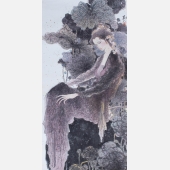 卢延光
卢延光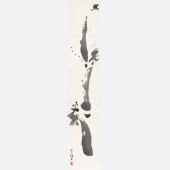 雪山静岩博
雪山静岩博 庞明璇
庞明璇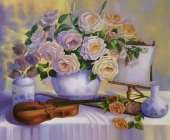 未知
未知 张大千
张大千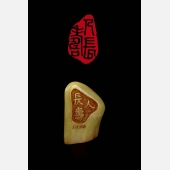 陈维廉
陈维廉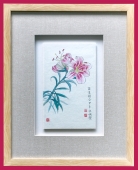 赵映璧
赵映璧




